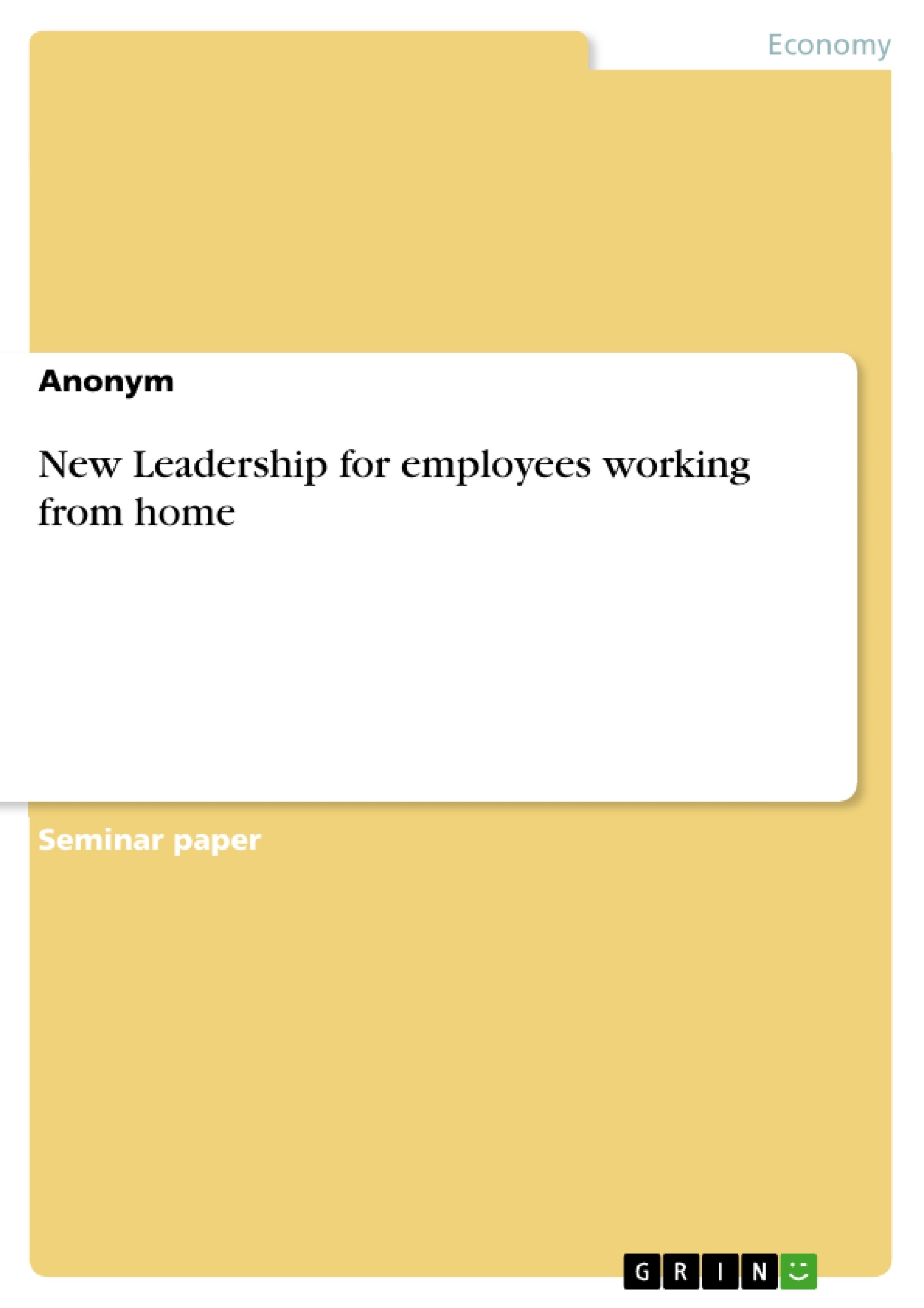The goal of this thesis is to explore New Work, New leadership, as well as Home/Mobile Office and answer the modal goal: How Leadership change to manage employees in the home/mobile office. First, the terms home office, leadership as well as New Work and New Leadership are defined to create a theoretical basis. I will then explain which new methods managers can use to manage employees in the home office and which tools are necessary for this. After this, the theoretical methods will be reviewed with a mini survey, in which the previously explained areas were evaluated in a current environment in order to determine the extent to which the methods are applied in the current working environment. This assignment concludes with an answer of the modal goal and a description of the research results, as well as a discussion, critical reflection and an outlook.
Home office, mobile office, teleworking, and hybrid teams. The coronavirus pandemic has changed the world of work significantly and for the long term. Within a very short time, a majority of employees have been transferred from company offices to their home offices, which many companies continued even after the pandemic. However, this has not only been a major change for employees, who had to get used to it as quickly as possible. The home office has also brought some challenges for management and executives that need to be faced. Because of the reduced direct employee contact and physical distance, employees have to be managed from a distance.1 But how can employee management also be conducted in the home office and how Leadership change because of this new Situation? To answer this question, I have dealt in the following assignment with the problem: What is New Work, New Leadership and home/mobile office? as well as the modal goal: How Leadership change to manage employees in the home/mobile office?
Inhaltsverzeichnis (Table of Contents)
- 1. Introduction
- 1.1. Modal goal and problem
- 1.2. Processing method
- 1.3. Goal and structure of work
- 2. Theoretical Basics
- 2.1. Leadership
- 2.2. Home Office and Mobile Office
- 2.3. New Work and New Leadership
- 3. Main Part
- 3.1. New Work and New Leadership
- 3.2. How Leadership change because of the Work in Home Office
- 3.2.1. Digital Communication and Technology.
- 3.2.2. Control, Trust and personal Mindset
- 3.2.3. Relationship and Motivation of Employees
- 3.2.4. Feedback Culture
- 3.3. Method of transformational Leadership
- 4. Study Case
- 4.1. Survey.
- 4.2. Survey results
- 5. Conclusion
- 5.1. Description of research results
- 5.2. Answering the Modal Goal
- 5.3. Summary..
Zielsetzung und Themenschwerpunkte (Objectives and Key Themes)
This assignment explores the implications of home office work on leadership styles. It aims to answer the question of how leadership must adapt to effectively manage employees in a remote setting. This analysis includes an examination of the theoretical foundations of leadership, home office, and mobile office work, as well as a study on the practical application of these concepts.
- New Work and New Leadership
- Home Office and Mobile Office Management
- Leadership Adaptations for Remote Teams
- Digital Communication and Technology
- Building Trust and Motivation in Remote Environments
Zusammenfassung der Kapitel (Chapter Summaries)
- Chapter 1: Introduction This chapter introduces the research question, outlining the impact of the pandemic on the world of work and the challenges posed by home office management. It also describes the research methodology, highlighting the use of both primary and secondary sources.
- Chapter 2: Theoretical Basics This chapter provides theoretical context by defining key concepts like leadership, home office, mobile office, and New Work. It examines the traditional model of leadership and how it has evolved to address the needs of a digitally connected workforce.
- Chapter 3: Main Part This chapter delves into the adaptations required for effective home office leadership. It discusses the role of digital communication and technology in maintaining team cohesion, the importance of building trust and motivation in a remote setting, and the need for a robust feedback culture.
- Chapter 4: Study Case This chapter presents a survey that explores how the theoretical concepts discussed earlier are applied in practice. It analyzes the findings of the survey to understand the current approaches to home office leadership in real-world environments.
- Chapter 5: Conclusion This chapter presents a comprehensive discussion of the research findings, outlining the key takeaways from the study and providing a reflection on the implications for future research. It also includes a critical analysis of the limitations of the study and offers a future outlook on the evolving landscape of remote work management.
Schlüsselwörter (Keywords)
This assignment focuses on the evolving nature of leadership in a world increasingly dominated by remote work. Key concepts include New Work, New Leadership, home office, mobile office, digital communication, trust, motivation, feedback culture, and transformational leadership. The research explores the challenges and opportunities presented by managing employees in remote settings, particularly in light of the increasing prevalence of home office work.
- Citation du texte
- Anonym (Auteur), 2023, New Leadership for employees working from home, Munich, GRIN Verlag, https://www.grin.com/document/1435140



